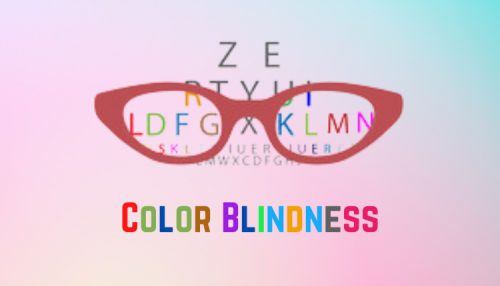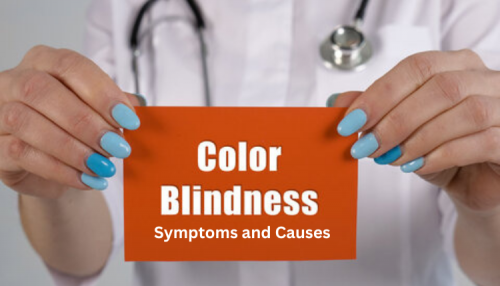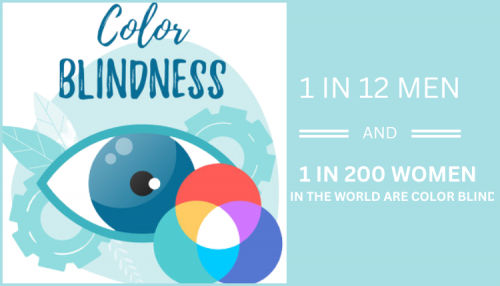Color Blindness - Why Are Men More Likely To Be ColorblindA Story by Lucy PaulsonColor blindness condition is more common in males in which people doesn't able to distinguish colors.
Color blindness occurs when you are unable to see colors naturally. It is also called a color vision deficiency. Color blindness usually occurs when an individual cannot differentiate between certain colors. This generally happens between greens and reds, and occasionally blues. In the retina, two kinds of cells detect light rods and cones. Rods detect only light and dark and are extremely sensitive to low level light. Cone cells detect color and are focused near the center of your vision. Cones see three types of color: red, green, and blue. The brain uses information from these cone cells to determine our color perception. Color blindness can happen when one or more of the color cone cells are missing, not working, or detect a different color than normal. Severe color blindness happens when all three cone cells are missing. Mild color blindness occurs when all three cone cells are present but one cone cell does not function properly. It detects a distinct color than normal. Color Blindness - Symptoms And Causes
Symptoms You may have a color vision deficiency and don't even know it. Some people figure out that they or their child has the condition when it confuses - such as when situations are distinguishing the colors in a traffic light or interpreting color-coded learning materials. People affected by color blindness may not be capable to determine:
The most common color deficiency is an incapability to see some shades of red and green. Usually, a person who is red-green or blue-yellow deficient isn't completely insensitive to both colors. Deficiencies can be mild, moderate, or extreme. Causes Seeing colors across the light spectrum is a complicated process that starts with your eyes' ability to react to different wavelengths of light. Light, which has all color wavelengths, penetrates your eye through the cornea and passes through the lens and transparent, jelly like tissue in your eye (vitreous humor) to wavelength-sensitive cells (cones) at the back of your eye in the macular region of the retina. The cones are light sensitive. It is mainly sensitive to short (blue), medium (green), or long (red) light wavelengths. Chemicals in the cones initiate a reaction and send the wavelength information via your optic nerve to your brain. If your eyes are normal, you sense color. But if your cones lack one or more wavelength-sensitive chemicals, you will be incapable to differentiate the colors red, green, or blue. Color blindness has several causes
Inherited color deficiencies are more common in males than in females. The most common color deficiency is red-green, with blue-yellow deficiency being considerably less common. It is rare to have no color vision at all. You can inherit a mild, moderate, or severe degree of the condition. Inherited color deficiencies usually affect both eyes, and the severity doesn't vary over your lifetime.
Some diseases that can cause color deficiencies are sickle cell anemia, diabetes, Alzheimer's disease, multiple sclerosis, glaucoma, Parkinson's disease, macular degeneration, chronic alcoholism, and leukemia. One eye may be more affected than the other, and the color deficiency may get better if the underlying disease can minister.
Some medications can change color vision, such as some medicines that treat certain autoimmune disorders, heart problems, high blood pressure, erectile dysfunction, infections, nervous disorders, and psychological issues.
Your capability to see colors worsens gradually as you get older.
Exposure to some chemicals in the workplace, such as carbon disulfide and fertilizers, may provoke a loss of color vision. Why Does Color Blindness Affect More Males Or Females?
The genes that possess the ability to see color are held on the X chromosome. Women have TWO X chromosomes - one they got from their father and the other one from their mother. Men contain ONE X chromosome and ONE Y chromosome. Because women don’t have a “Y” chromosome, it must have come from their father - and therefore the male X chromosome always comes from one of the two that their mother has. (There are very, very few people with other variations - such as people with two X chromosomes and one Y - or one X and two Y’s…but we’ll leave those out of this discussion for clarity.) If there is a defective color vision gene on an individual X chromosome, then a woman has a “backup” gene on the other X that lets them see naturally. But if a man has that same X defect, they have no backup gene and, sadly, they are going to be colorblind. The only way for a woman to be colorblind is if she has the same defect on both of her X chromosomes…which is quite improbable. Hence it should arrive as no surprise that approximately one in 12 men is colorblind but only one in 200 women are. So we learn from the incidence in men that around one in 12 X chromosomes has a color vision deficiency in them. You’d think then that a woman would have a one in 12 cases of a defect on her first X and a one in 12 on the second - which would give her a one in 144 chance (twelve times twelve) possibility of having two defective genes…which is true. But a woman who has two defective X’s won’t have colorblindness if the two X’s carry other deficiencies. So if one X has the red/green colorblindness deficiency and the other X has the blue/yellow form - then she’ll still have ideal color vision. Since red/green is the most typical deficiency and blue/yellow is quite rare - this enhances a women's possibility from one in 144 to one in 200. This situation has some fascinating consequences
You cannot inherit colorblindness from your father because you obtained your Y chromosome from him. Men only inherit their single X chromosome from their mothers. If she’s not color blind but has one defective gene - then you had a 50/50 chance of inheriting the right gene. You can inherit colorblindness from your maternal grandfather because if he was color blind, then your mother got one defective X chromosome from him - and had a 50/50 chance of passing it onto you. If your mother is colorblind - then you will be too.
You can’t be colorblind unless your father was colorblind too. Even if your mother carried two bad X chromosomes, you’ll get a good one from your father. If you are colorblind, then all of your male children will be. If your father was colorblind then there is a more than 50/50 chance that your male children will be too. If your husband is colorblind, that won’t affect your male children at all - but it does improve the risk for your female children - and your daughter’s grandchildren. © 2022 Lucy PaulsonAuthor's Note
|
Stats
334 Views
Added on September 14, 2022 Last Updated on December 29, 2022 |




 Flag Writing
Flag Writing